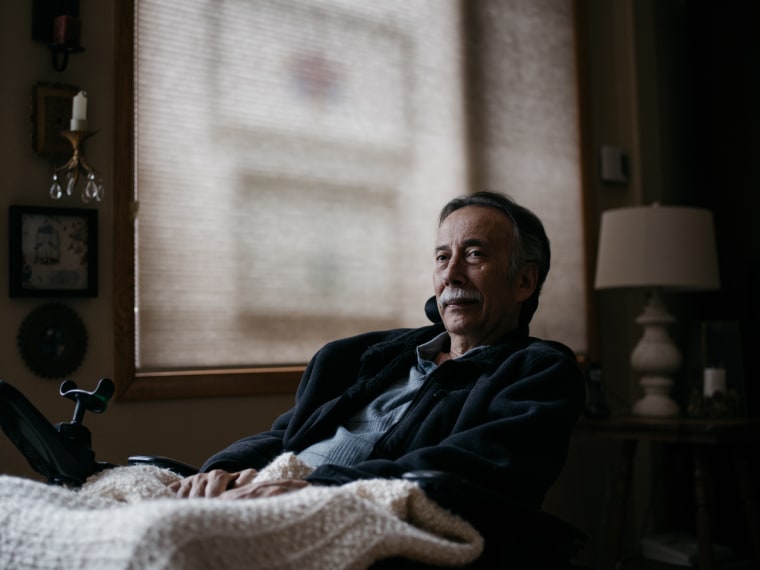PARKER, Colo. — In early February, as Lou Gehrig’s disease left him fighting to breathe, George Gallegos had a decision to make: Was he ready to die?
Gallegos, 68, a retired psychologist, sat in an electric wheelchair in his brightly lit home southeast of Denver. His illness, also called amyotrophic lateral sclerosis, or ALS, had left him unable to speak more than a couple of words without pausing to inhale, his chest heaving and neck cords bulging with each gulp. His hands were curled into claws. His voice had weakened to a near whisper.
"My condition has turned more serious,” he said one Monday afternoon. He was still reeling from a respiratory attack that forced him to spend much of the weekend drawing oxygen from a ventilator. “When I get to this place, I get scared. I get to feeling like I'm losing every day, and ALS is winning.”
Gallegos had two choices. He could allow the disease to take its course. Or he could pursue another option, newly legal, that would allow him to pick the time and place of his death.
Under a law Colorado passed in 2016, he had obtained a prescription for a cocktail of drugs that would put him to sleep, drop him into a coma, and, within an hour, stop his heart and breathing. He’d navigated a thicket of bureaucratic requirements to get approved. He’d prepared his family, arranged his funeral, and written detailed directions for the handling of his accounts. The next steps were to call the pharmacy, have someone mix the drugs in a cup, and drink.
Members of the right-to-die movement have fought to make “death with dignity” possible for terminally ill Americans. Thousands have ended their lives since 1997, when it was first made legal in Oregon. On Friday, New Jersey became the eighth state to legalize medical aid in dying, and others are considering it.
Advocates say the option gives patients more control over their fate, and relieves some of their anxiety over death. Opponents say giving people the ability to end their own lives is immoral, undercuts doctors and risks abuse.
In the middle are people like Gallegos. He embraced the option but spent his final weeks agonizing over it. Roughly a third of people who get prescriptions for end-of-life medications do not take them, according to states that track their use. As more states offer the option to terminally ill patients, thousands of Americans each year, along with their loved ones, are confronting this harrowing dilemma.
Gallegos did not want to suffer unnecessarily, but he wasn’t sure where to draw the line. Was it when he could no longer breathe, or eat, on his own? Or when he felt he’d become too much of a burden to his family? The drugs offered an escape, but he worried that ending his life was cowardly and unnatural.
Family members, friends, doctors and counselors told Gallegos he would know when the time was right, but he wasn’t so sure.
“Day to day, I just fight with the symptoms and hope I can still make the decision as to when my last day will be,” Gallegos said in one of many conversations with NBC News as he moved toward death.
“I know I’m close,” he said.
‘There’s no way I’m going to die’
The disease came with dates.
The neurologist who diagnosed Gallegos with ALS in November 2015 cited research on average survival rates: Most patients lived from two-and-a-half to five years.
“Within that window is likely to be the time you have remaining,” the doctor told him.
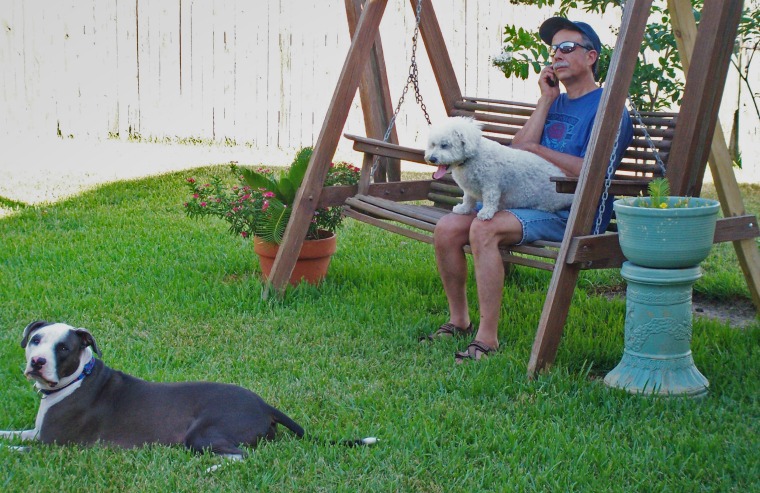
The news — following symptoms that began with difficulty writing certain numbers — felt like an ambush. Gallegos, an avid waterskier and fly fisherman, considered himself “relatively bulletproof” as he entered his late 60s. Now he was promised an early, agonizing death from a progressive neurodegenerative disease that attacks nerve cells in the brain and spinal cord, leaving them unable to communicate with the body’s muscles, which then waste away. Those afflicted gradually lose the ability to speak, swallow, control their bladder and bowels, and breathe.
It seemed impossible that could happen to him.
“There’s no way I’m going to die,” he remembered thinking. “I’m feeling OK. I can’t write so well. Yes, I have a limp. But I’m OK. I’m healthy. They’re telling me something that’s not going to happen to me.”
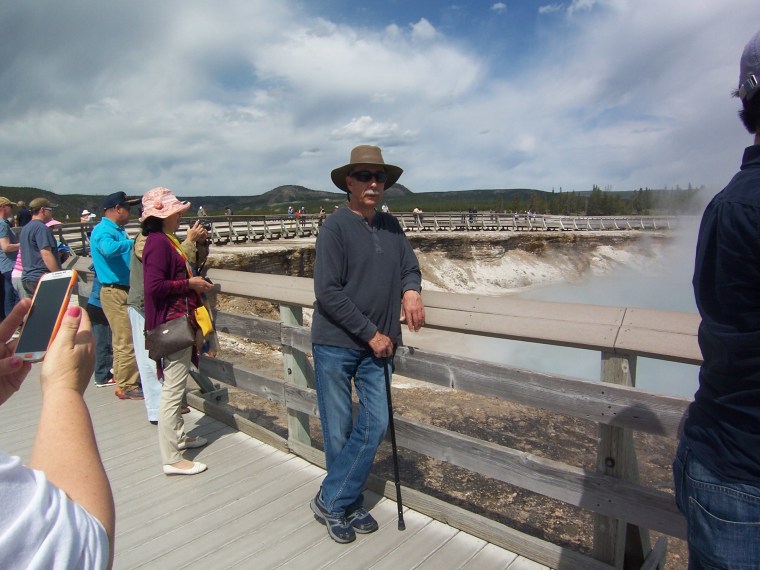
When his denial subsided, he saw that he could use his remaining time to say goodbye to the people he loved, leave things in proper order for Karen Miller, his partner of two decades, and live the rest of his days in as dignified a way as possible. At a basic level, that meant being able to maintain connections with family without becoming completely dependent on others and to die at home.
He joined an ALS support group. He retired from the nursing facility where he was known by the elderly residents as Dr. George. Many of them contributed to a GoFundMe campaign that sent Gallegos to the 2016 Super Bowl in San Francisco, which his beloved Denver Broncos won.
Gallegos also watched with interest a campaign to make medical aid in dying legal in Colorado. In November 2016, he and Miller joined 65 percent of Colorado voters who approved a law based on Oregon’s that legalized the option. By then, Gallegos was getting around in an electric wheelchair.
“Why wouldn’t you allow a person who is sure to die the opportunity to die with dignity, taking medications and perhaps avoid all the long worse kind of suffering that the condition brings to them?” Gallegos recalled thinking during the campaign.
But he didn’t pursue it himself.
“I was thinking: ‘That’s way far away. I’m not close to that yet. I can do it whenever,’” Gallegos said in a November 2018 interview. “Which was technically true. But I was closer than I would know.”
‘There are times when we'll just cry together’
ALS’s assault on Gallegos’ central nervous system continued.
He relied more on voice-to-text software for emails and text messages. His lung capacity diminished, requiring more time on a ventilator. It grew harder to swallow and cough. His speech slurred more often. Cleaning himself and going to the bathroom became arduous. He rarely left his house.
With each new complication, Gallegos added to an array of medications that helped him get through each day. He took pills for pain, swelling, chronic itchiness, bladder spasms, constipation, infections, lung congestion, sleeplessness, heartburn and high blood pressure. He kept track of them in a pill box and washed them down with water sucked from a cup fitted with a wide straw.
He depended on others for routine tasks. Nurses stopped by daily. He hired an Army veteran who lived nearby to help when Miller, a secretary at a nearby middle school, was at work. Medicare and long-term care insurance covered much of the cost, but still the out-of-pocket bills mounted. That included $5,000 for the wheelchair, more than $20,000 for a used wheelchair-accessible van and more than $20,000 to make their bathroom accessible.
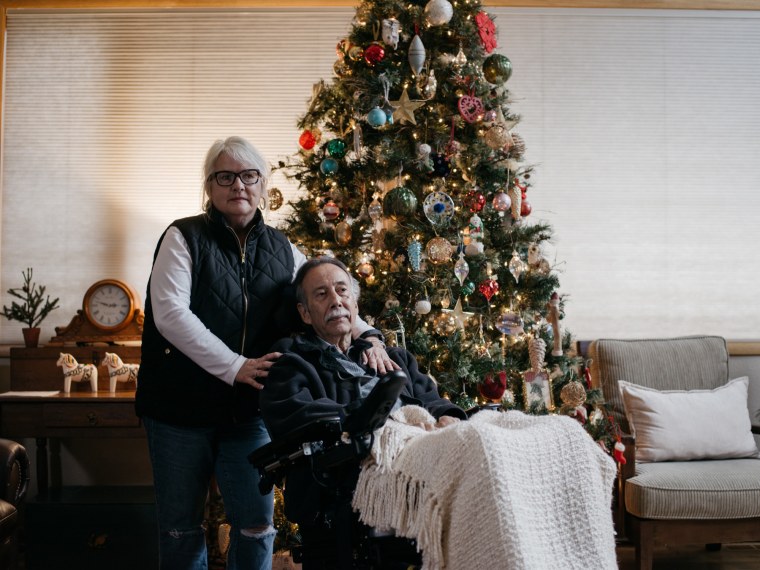
The veteran Gallegos hired, Kristine Kettlewell, fed him breakfast and lunch, helped him brush his teeth, ran errands, assisted him with paperwork. On good days, they went out for lunch or to shop. When Miller returned home, she fed him dinner and got him ready for bed. She often woke in the middle of the night to get him a drink of water or adjust his blanket. He soon began sleeping in his wheelchair.
They’d been together since 1997 without getting married; each had children or stepchildren from prior marriages. With ALS closing in, they decided to make it official. In April 2018, they were wed in their living room by a chaplain from Gallegos’ palliative-care program, with only their dog, a bichon frise named Yaleb, beside them.
At the same time, Gallegos began preparing Miller for life without him. He wrote out instructions on whom to call, what accounts to change, what bills to pay.
The disease tested their relationship: Miller, with little time to relax, sometimes lost patience with Gallegos, and he hated feeling like a burden. But it also brought them closer. He learned to savor certain moments ─ a deep conversation, a blue sky, a tasty meal ─ that reminded him how wonderful it was to be alive and to love. He told Miller he was sad that their time together was nearly over.
“There are times when we'll just cry together,” Miller, 58, said.
‘You have a choice’
The worsening symptoms forced Gallegos to think more seriously about medical aid in dying. He watched members of his ALS support group endure excruciating deaths from a disease that typically ends with respiratory failure but can also cause pneumonia, malnutrition and blockages in the arteries of the lungs.
He recalled one friend “writhing and contorting, scratching, clawing, gnawing, hurting others around him, trying to escape the jaws of death.” The man refused to consider ending his own life. “You need not suffer this way,” Gallegos told him. “You have a choice.”
Gallegos decided that he, too, should have a choice.
Colorado’s law, which went into effect in December 2016, includes a rigorous process to make sure the drugs are administered voluntarily to people already facing imminent death. The law also frees patients of the legal implications of suicide: It requires that the death certificate list the underlying illness, so that there is no impact on life-insurance policies.
Following the law’s requirements, Gallegos saw two doctors who documented that he was in sound mental health, had six months to live and wasn’t being forced to seek the drugs. The process stretched through the summer of 2018.
After getting approved, Gallegos received the prescription for a combination of drugs known as DDMP last September. If he decided he wanted the drugs, all he had to do was call a pharmacy, pay $450 and have them delivered. Miller ─ who’d agreed to go along with whatever he decided ─ could then prepare the drugs and bring him the solution, but the law said he had to sip and swallow it himself.
Having the option to legally end his own life felt like an important accomplishment ─ another step in preparing for his final days. But he still did not know if he’d go through with it.
He sought advice from people he trusted, and he also looked for signs.
At one point he jokingly tied his fate to the Broncos’ mediocre season: If they kept losing, he’d do it. If they went on a winning streak, he’d hold off.
“I am still in a search,” Gallegos said in an interview at his home in November.
‘I can’t see how that presents me with dignity’
No signs arrived.
Through fall and winter, as the breathing and coughing attacks grew more frequent, Gallegos remained unable to decide whether, or when, to take the drugs.
He’d always been slightly built, and the loss of muscle made him look spectral in loose-fitting sweatpants and a fleece jacket. His speech diminished, but his intellect was as sharp as ever.
“I'm wondering how much longer I will choose to live, in recognition of the quality-of-life issue that seems to erode, evaporate, daily,” he said in early December. “It's really a hard thing.”
His spent longer stretches on the ventilator, which delivered oxygen through a mask that covered his face. His bedtime routine with Miller, which included lifting him from the toilet, tested them both. He wondered how long he could expect her to be his caregiver.
They managed a relaxing Christmas Day, watching old movies by themselves. But by New Year’s Eve, George was asking Miller to pound him on the back to break up his chest congestion. Afraid of choking, he didn’t eat anything much thicker than yogurt. “I’m useless,” he said.
Advocates say medical aid in dying ─ known as MAID ─ gives patients more power and dignity. But he couldn’t see it. ALS would always be more powerful. And was it really more dignified to end his own life? He didn’t see it that way.
“I really feel like I'm running away from a big bad option that's coming to kill me,” he said in mid-January.
‘The finish line of my life’
The next month, Gallegos decided to check himself into a nursing facility for five days. The goal was to have the staff help him “retrain” his bowels so he could go to the bathroom during the day, giving Miller a break.
“I feel discouraged because I know this is another indicator of things getting progressively worse for me,” he said. He paused every couple of words, eyes widening and eyebrows rising as he inhaled. “I’m moving towards the finish line of my life.”
Before he left, Miller asked him: “George, are you ready to get the meds?”
“I think I’m ready,” he told her. “I think I need to do it soon before I lose the strength.”
He decided to get the prescription filled when he returned.
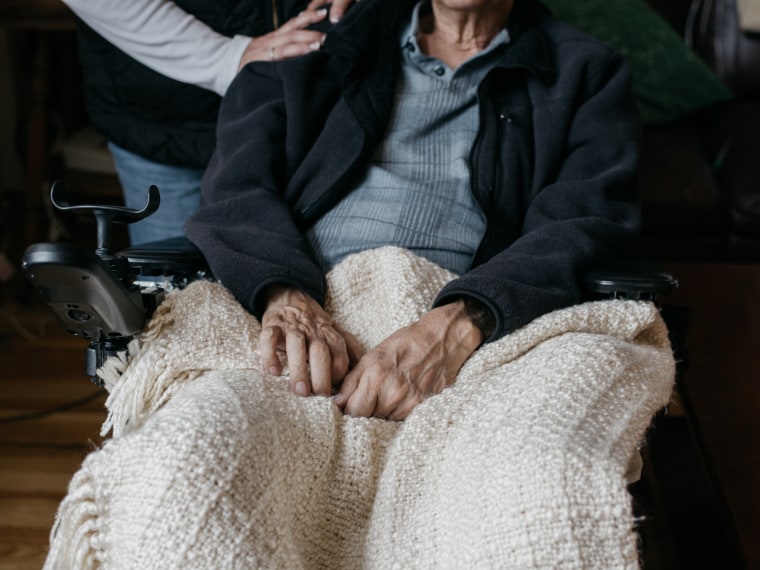
At the nursing facility, Gallegos didn’t get the around-the-clock care he was used to. He suffered another respiratory attack, and was unable to complete the bowel regimen. He returned home after four days, on Feb. 22, looking pale and frightened. Miller had trouble understanding him. He asked to be put immediately on his ventilator, and remained on it for most of that day and the next, watching TV and eating a bit.
On Feb. 24, a Sunday, nurses arrived to give him a shower. When he emerged, his head was slumped to his chest.
Miller rushed to Gallegos and searched for a pulse, but she couldn’t find one. She and the nurses put him on his ventilator, then dressed him and put him in bed as they waited for a hospice nurse to arrive. The nurse confirmed that Gallegos was dead.
Miller kissed him. “Thank you for all these wonderful years,” she said.
A ‘dignified’ way to die?
He didn’t die scared.
Miller consoled herself with that thought.
Whether he died with dignity was another question.
“I don’t think he would have thought that was a dignified way to die,” Miller said the day after Gallegos’ March 3 funeral. In the living room was a bouquet of Broncos-orange roses that had surrounded Gallegos’ urn at the service. “We had to dress him in bed. Put on his clothing. I think he probably would have prefered to use MAID, but it didn’t end up that way.”
Gallegos had meticulously planned for all aspects of his death, but wrestled with the option that medical aid in dying offered.
He chased an answer until the end.
“I don’t know how people do such a thing,” Gallegos said three weeks before his death. “But that’s what I think I’m supposed to be able to do: decide when is my last day. Will it be a weekend? Will it be a weekday? Will it be on a Monday? I have no idea. But I’m supposed to know.”
